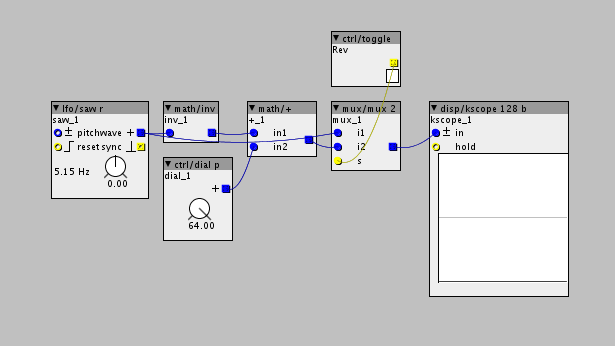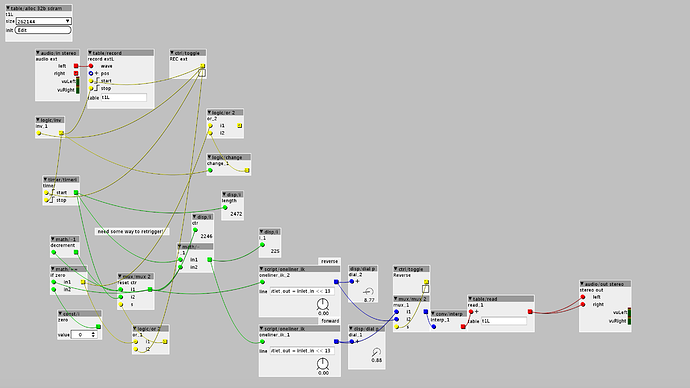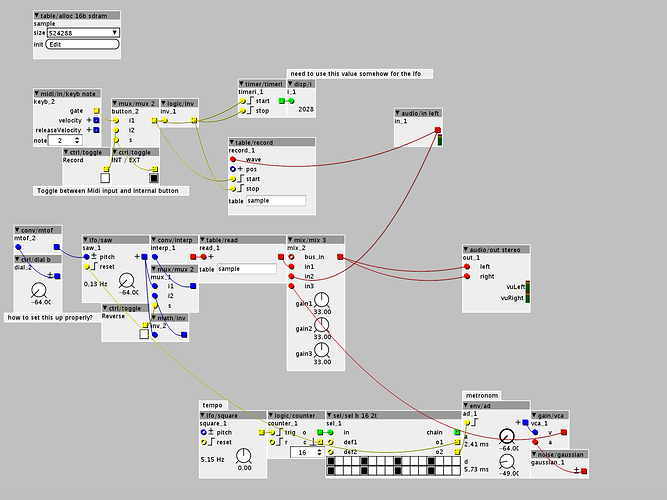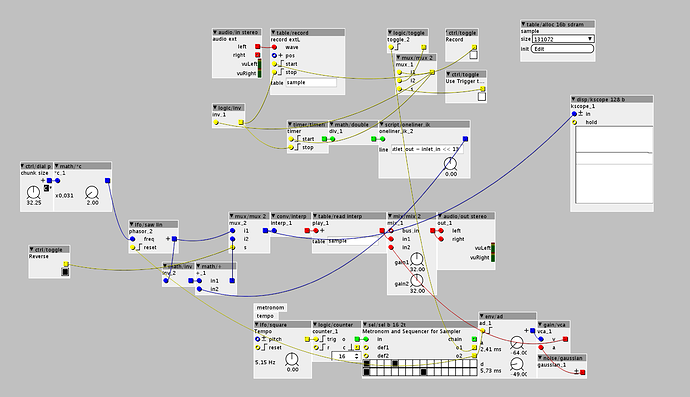Yeah me too. We will find out how to soon, I am sure 
Reverse Audio in Tables
Ok guys, I figured out how to reverse the playback but I am still having problems in driving the table input properly.
So first of all I want to summup what I want to achieve with this:
I want to create some kind of sampler/looper with live input. So I press a button, as long as the button is pressed live input ist being sampled and then retriggered by sequenced midi notes (or a sel sequ in axoloti).
I want to the playback of the samples to be either normal or in reverse. The recording and retriggering part was no problem so far.
I am struggling now with the phasor and reverse playback. So just to make sure I got it right:
The phasor reads through the table in audio samples (in samplerate), it should be a linear rising ramp that should go from 0 (start of the sample) to whatever value the samples ends.
With reverse playback it should start at the value the sample ends end go down all to zero.
Retriggering means retriggering this ramp.
Here are my two aproaches:
This is from Mood Organs looper. I realised that it reads length of the recording with a timer and then outputs a ramp between 0 and the end of the sample, just perfect for what I need. But how do I retrigger this?
SimpleLooperReverse.axp (8.5 KB)
This is a different aproach. Problem here is the lfo reads through the whole table instead of just the recorded part. For reverse this means it starts at the very end of the table rather then the end of the recording.
I would need to read the value where the recording stops (how long the sample is) and tell the lfo to just go to that value in forwards playback or to start at that value for reverse playback.
Reverse Try.axp (8.6 KB)
Try by adding an offset for the inverted signal. Add a math/+ object, connect the inverter to math+ AND connect a dial with a value of 64. I think this might help. Like this:
Use the scope to see exactly where the lfo is positioned in the table.
Well, this is a bit a harder, since you dont know how long you exactly recorded. If yuo know how long you record, it shouldnt be a n issue.
Thanks for the suggestions, I think JeromeB did something similiar in the Rockafella update he just posted.
I measured the recording time with a time and used this as offset. (I had to multiply it by two, no Idea why).
This seems to do the trick. The only thing I realized is that for my patch it is more musical if the starting point for the reverse sample somehow refers to the rhythm I'm sequencing with. So for example If the sequence input is a quarter note pulse, I want the reverse sound to start after one quarter note. So I need to measure the sequencer input rather then the recording input.



